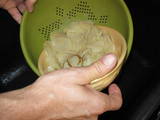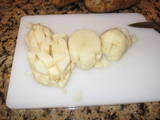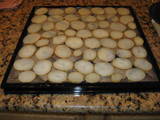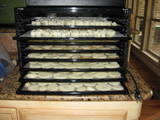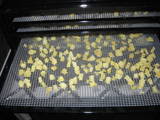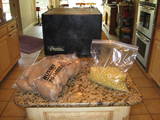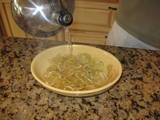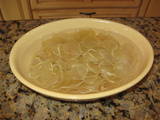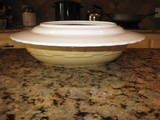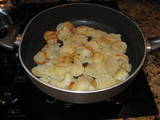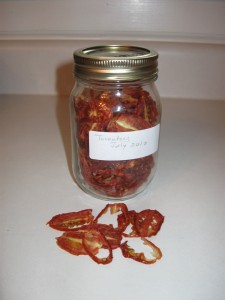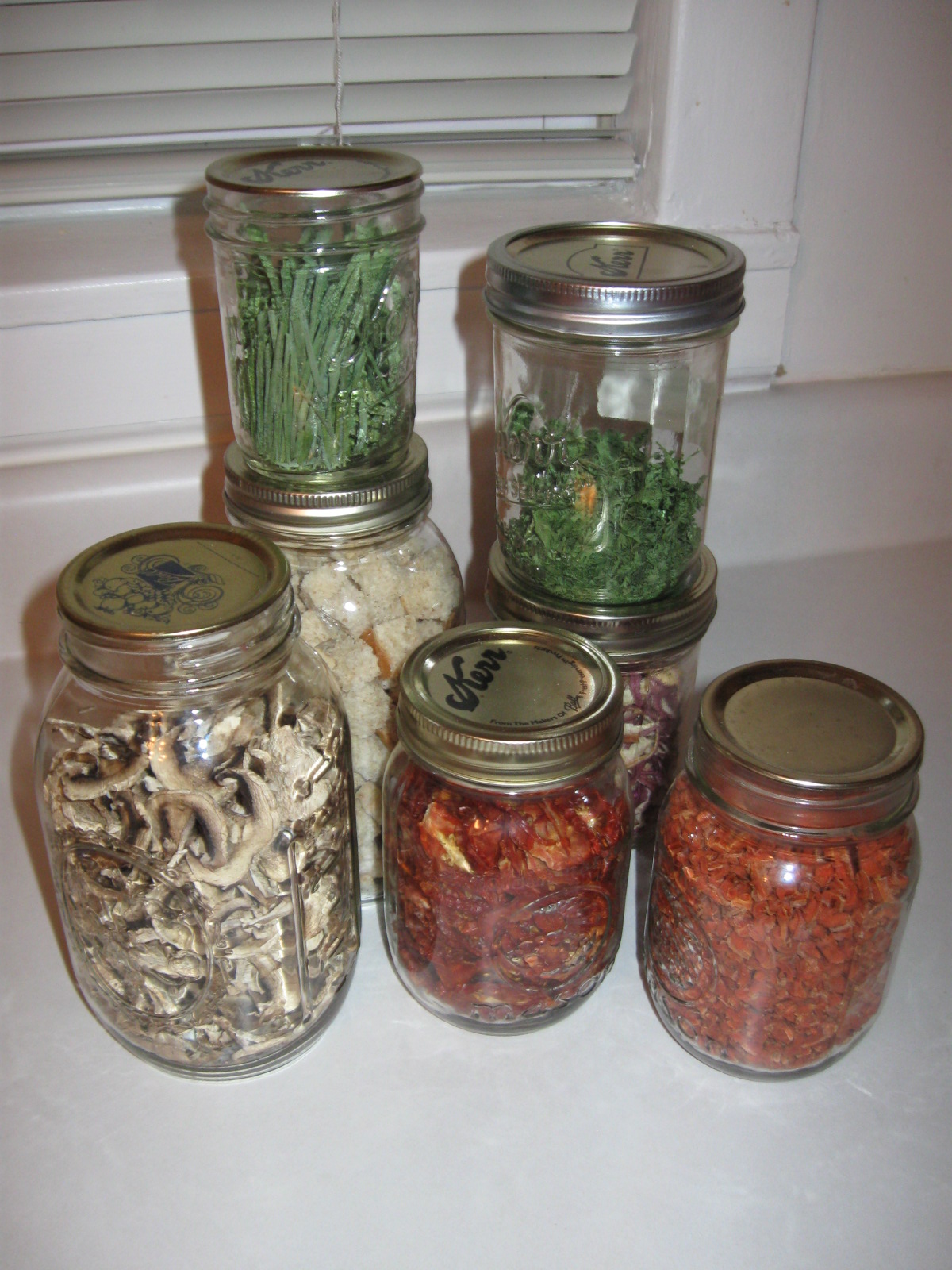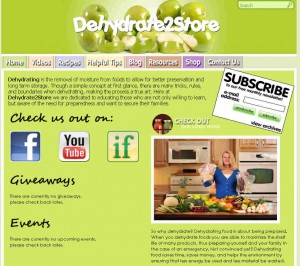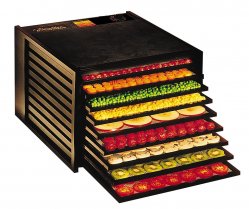Shortly after I began learning about dehydration I found a great deal on Potatoes – $1.99 for a 20 lb. bag. With this being such an excellent value, I decided this would be my next experiment. Little did I know that this would become the all-time family favorite dried food.
Potatoes must be blanched* before they are dried, so drying potatoes is not quite as carefree an operation as with tomatoes.
I’ve put together a little picture tutorial on the method…
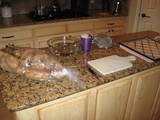
*Any vegetable that must be blanched before freezing must also be blanched before dehydration. This is a good rule of thumb. Any decent all-purpose cookbook with instructions on freezing food will give you a guide for this.
After peeling (optional) and dicing or slicing, blanch the potatoes in boiling water until cooked sufficiently to heat up clear through. How long this takes will depend on the thickness of your slices or dices. I found that about 3-4 minutes was usually sufficient. After a batch or two, you can tell by looking at them whether they are done enough. It’s a bit of an art…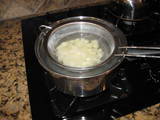
I soon discovered that, if improperly blanched, the potatoes were no good… 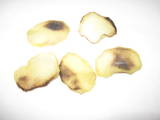 the parts of the potatoes that were not blanched properly turned black when dried.
the parts of the potatoes that were not blanched properly turned black when dried.
After blanching, cool immediately in an ice-water bath.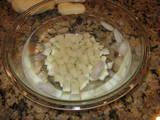
Arrange on dehydrator trays and dry at about 120 degrees Fahrenheit overnight. The potatoes should be completely dry all the way through for proper storage. Slices should snap when broken in two. Cubes should be dry completely to the center.

The potatoes reduce greatly in size during the drying process and store very well.
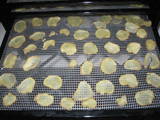
To save freezer space, you can also take dehydrate frozen hashbrowns. Since they have been prepared for freezing, you don’t need to blanch first. You can just dump a package of frozen hashbrowns right onto the dehydrator trays and dry them. These are another favorite…
After dehydration, potatoes can be easily used in soups, stews, pot pies and the like. However, our family’s favorite way is to fry them in butter to add as a side dish to a meal.
Rehydrate the potatoes by placing in a bowl, pouring boiling water to cover and let soak for 15 minutes or more.

Drain well, fry in butter until nicely browned… salt and pepper to taste and enjoy.
